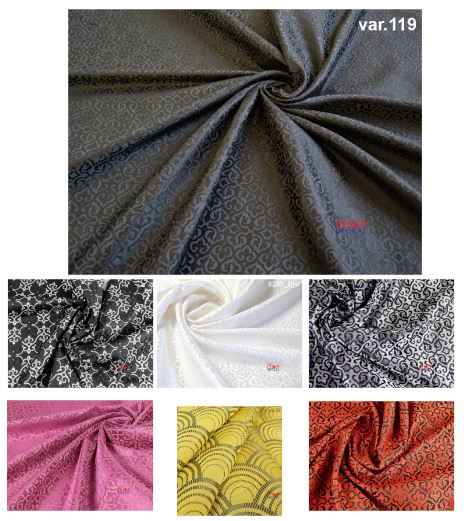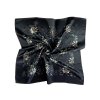Antiquity was the period of origin and development of the first civilizations, namely in the Middle East, the Mediterranean region and parts of Asia. It dates from the 4th millennium BC to 6.7. century A.D. The beginning of antiquity was the time of the spread of writing in the territory of the Middle East (specifically in Mesopotamia), in the territory of the Iranian highlands, in Syria and in the territory of Asia Minor. Longer and more decorative dresses stood out in fashion for women, while for men longer clothes indicated a higher social status. You can find more about ancient fashion, along with examples of brocades that may date to this period, in the article.
ANCIENT FASHION
Ancient fashion differed according to the territory in which the inhabitants lived - Egyptians, Romans and Greeks wore different clothes. The clothes had some features in common - they were uncut, often unsewn, laid, arranged, allowing for a wide variety of solutions, but there were almost no differences in the wardrobes of men and women. Women wore longer, decorative and fringed dresses. If a man wore long clothes, it meant his higher status in society. As soon as women wanted to distinguish themselves from other cultures, they chose more luxurious clothes, which they complemented with rare jewelry and lavish hairstyles.
Fashion of ancient Egypt
Egyptians wore clothes that emphasized the natural proportions of the body - tight clothes to the figure. The clothes of ancient Egypt were unchanged for several centuries - they used wrapping (regular fluffing due to the gathering of a large amount of fabric and fixed in regular folds) and fixation with resin. If they wanted a social layer, they used a different decoration of the clothing.
The loin cloth was the basis of Egyptian male clothing - it was worn by almost everyone, from the lowly to the monarchs, for whom it was created as a more elaborate, pleated, triangular garment.
For women, the so-called kalasiris was typical = it was close-fitting, tailor-made - the women looked like they were in a case.
Both men's and women's clothing were, in ancient Egypt, based on the contrast of colors and materials.
Fashion of ancient Greece
The ancient Romans had a flowing type of clothing - it outlined the natural line and movement of the body, differing only in the amount and way of waviness. Color symbolism began to emerge here - e.g. white was for the aristocracy, black meant sadness, etc.
Chiton = a man's cloak. It was in the style of a simple shirt dress and was taken as work, sports and travel wear. It was most often made of canvas. Men wore a short cloak called a chlamys (fastened on the right shoulder with a buckle) over the chiton. The outer garment was called himation - it was made of heavier fabrics and served to distinguish individual social strata.
The peplos was a women's garment - a rectangle of heavy, woolen fabric that wrapped around the body and fastened with a buckle on the shoulders. The next layer was, as with men, the himation. The last layer was a short cloak called chlamys.
Fashion of ancient Rome
The Greeks followed the Greeks in their clothing - the clothing was not sewn, the basis was a tunic similar to a chiton, which was worn by both men and women.
Men wore a tunic to the knees, belted at the waist and slightly gathered. The upper layer was called the toga = the national dress of free Romans. As soon as the solemn act of adulthood took place, young men received it as a sign of the right of Roman citizenship. Slaves, foreigners and exiles were not allowed to wear the toga. Made of white wool fabric.
The lower classes of the population wore comfortable, short, cloaks = pallium, paenula.
The intima tunic was typical for Roman women - slaves and foreigners differed from citizens in the number of garments on their intima. Over it, aristocratic women wore a table (a badge of Roman women). Unmarried women could wear a pallu, which was a garment similar to a toza. Already at this time, Roman women were trying to improve the appearance of their breasts using "bras" = belts made of fine leather or corsets made of knitted bast.










